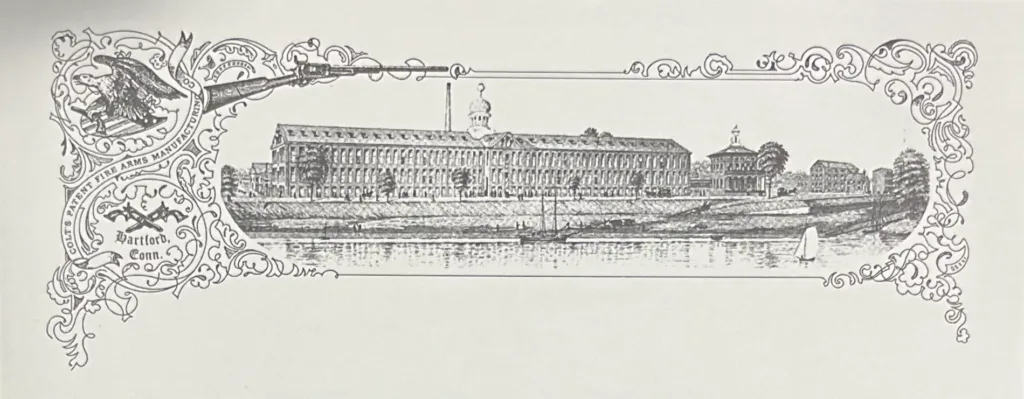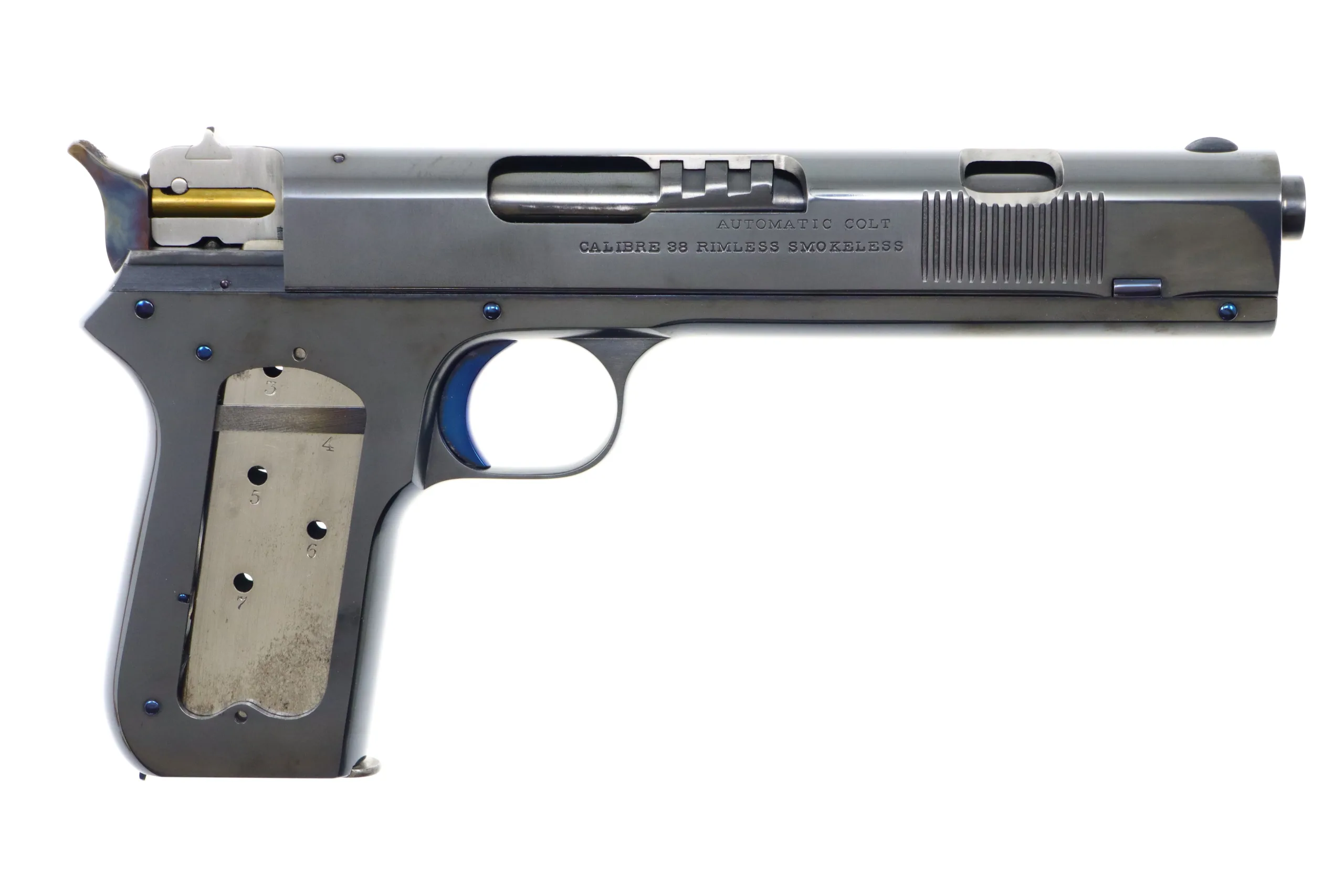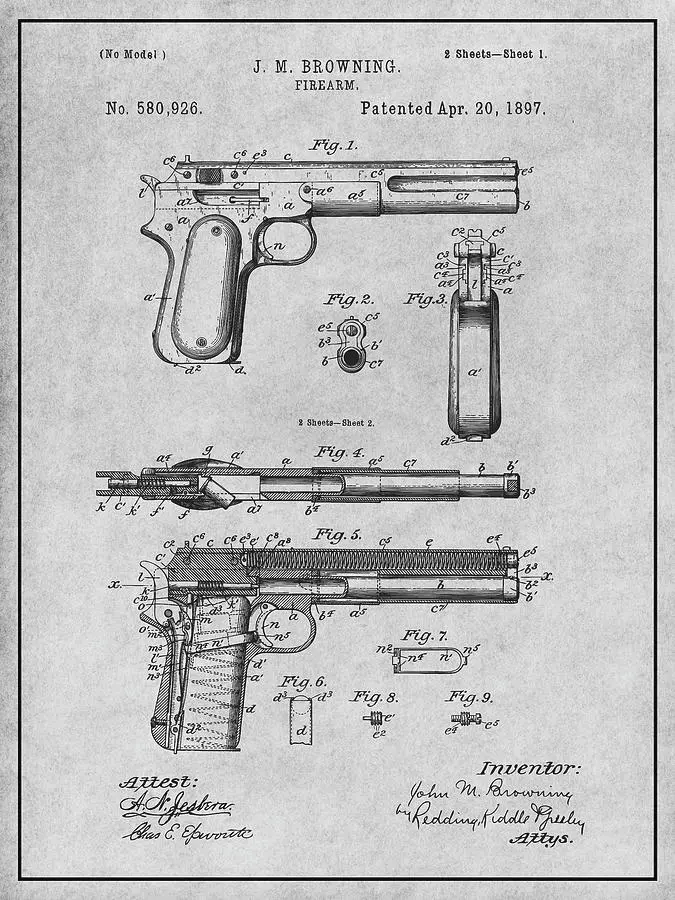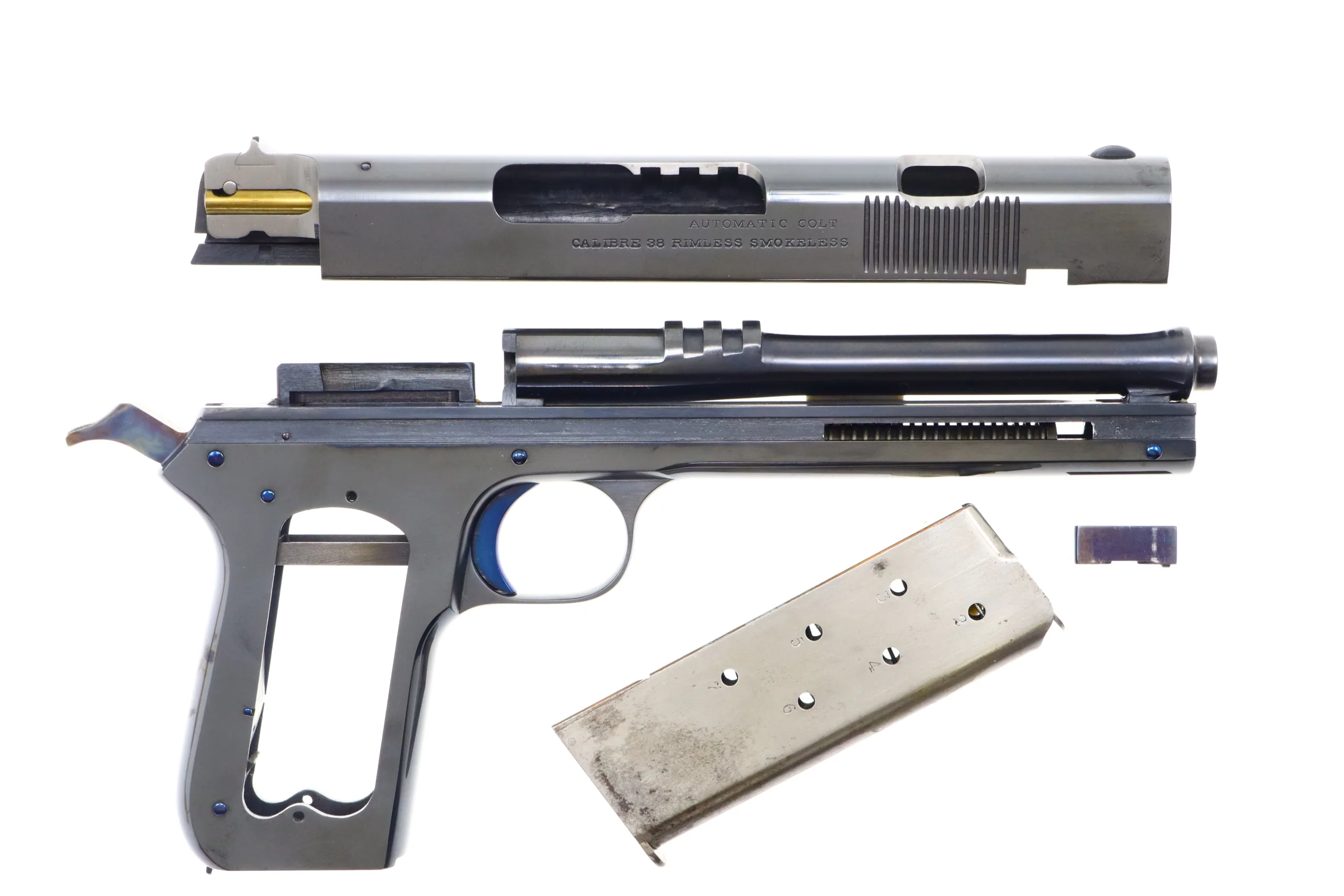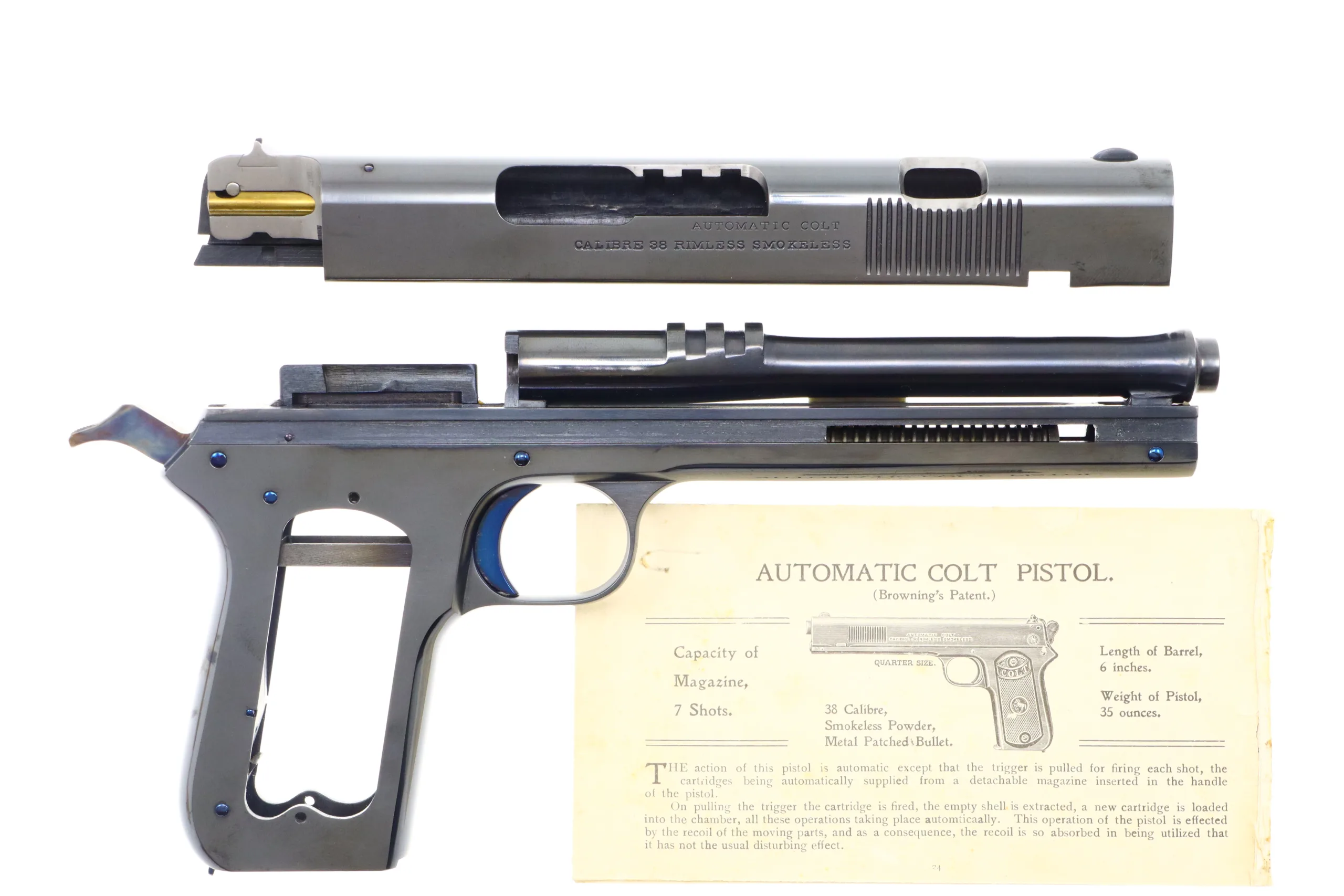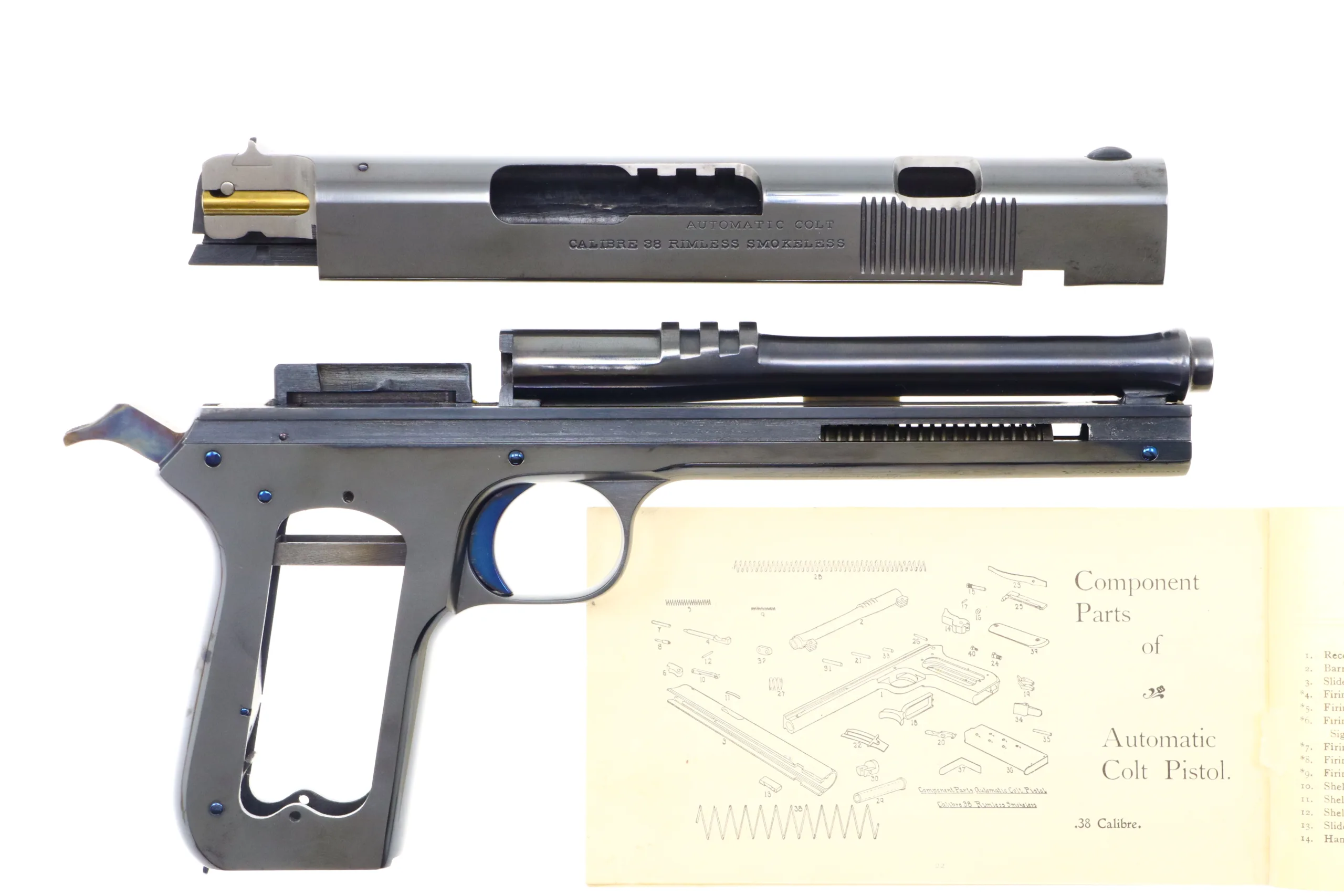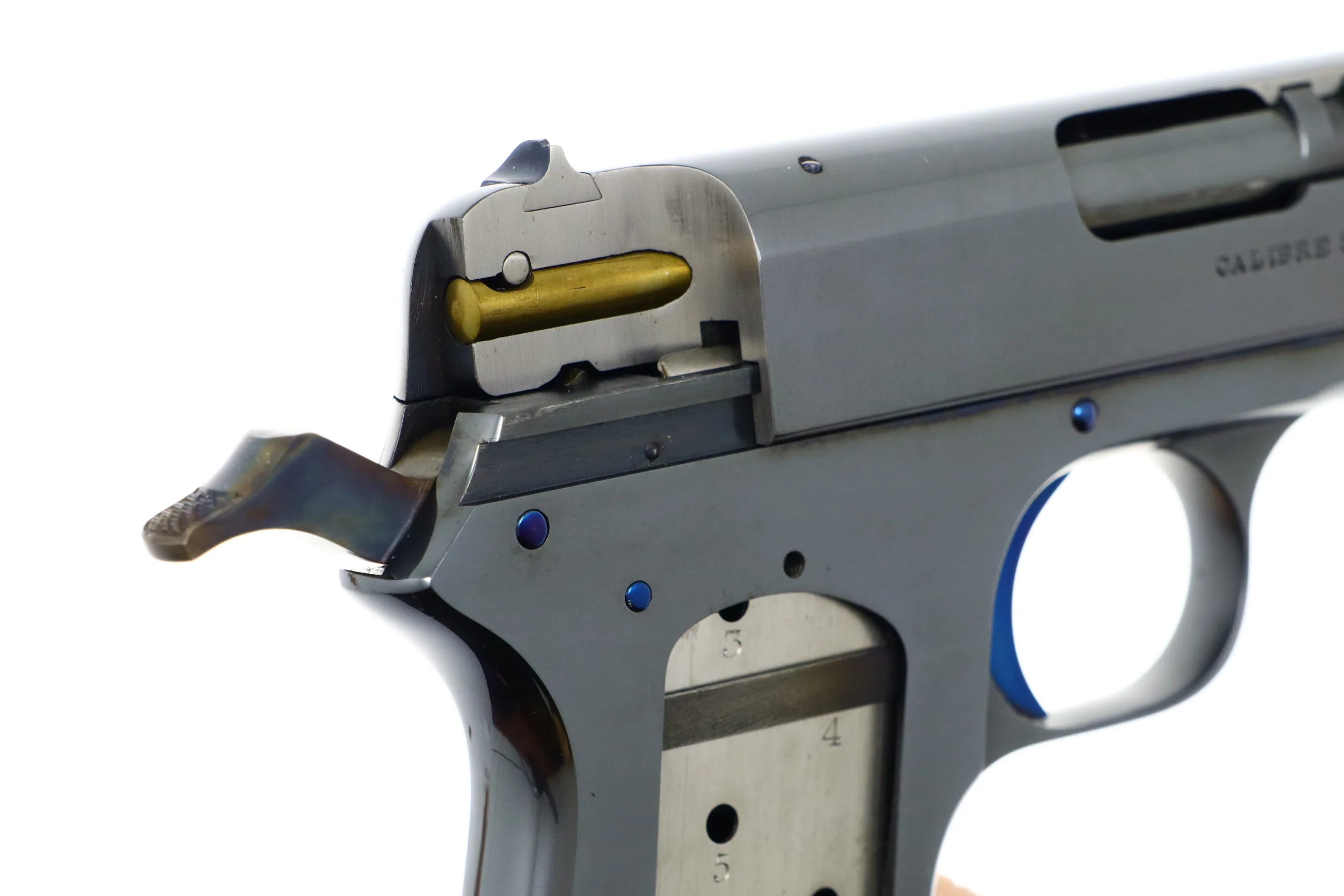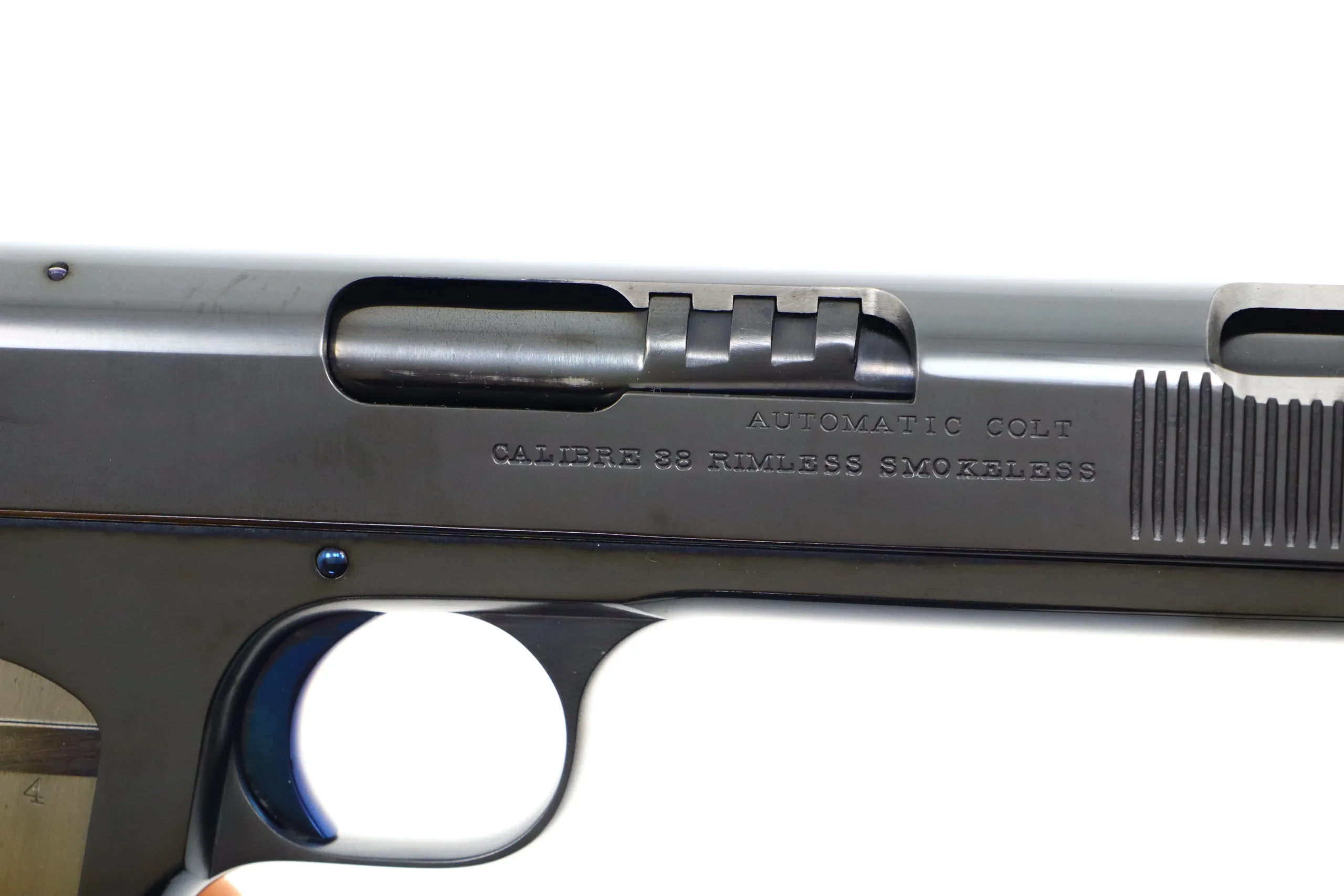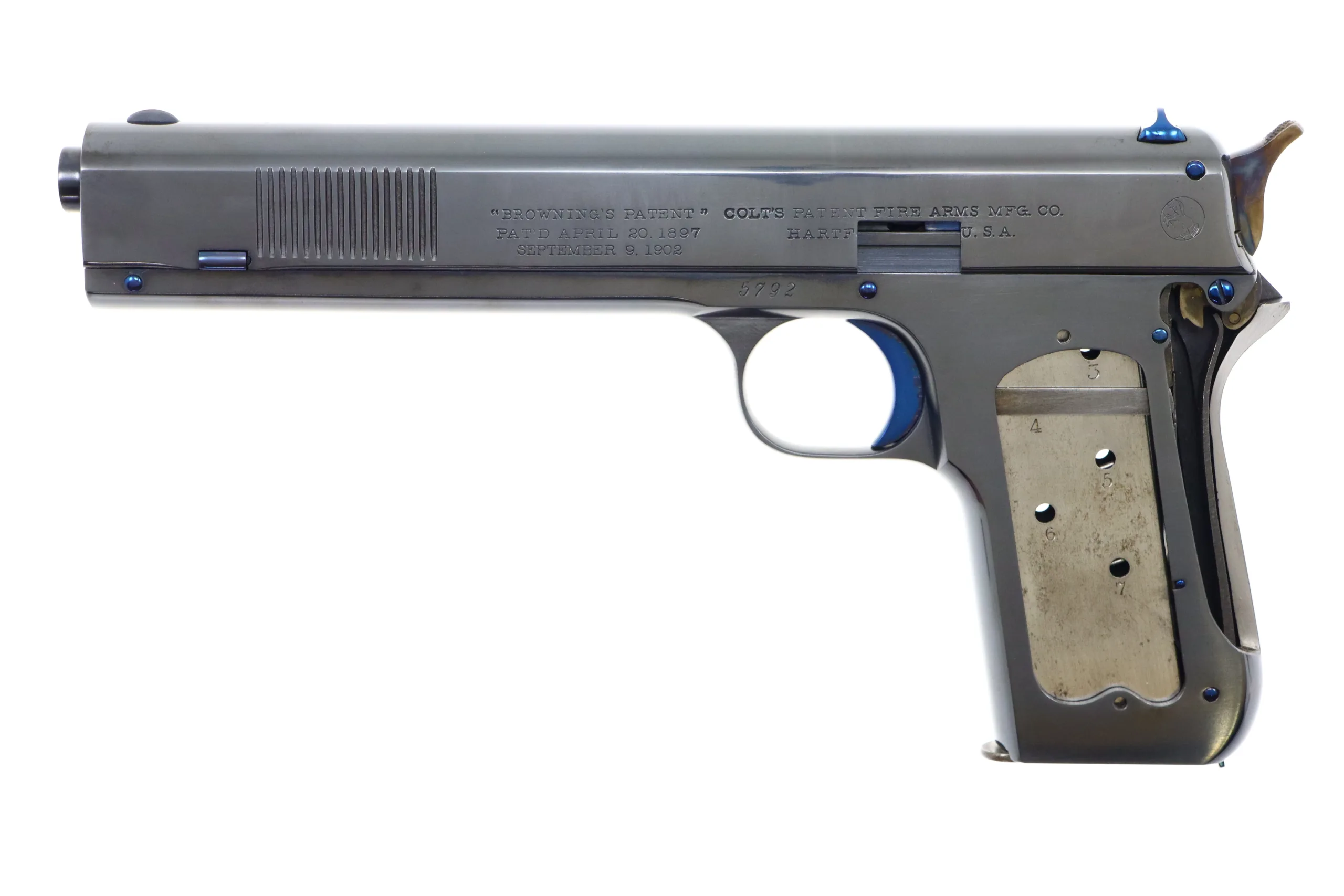Introduction
In the early 1890s, with the advent of smokeless gun powder and jacketed bullets, the stage was set to create semi-automatic pistols. By that time, several types of semi-automatic pistols had been developed in Europe. The most notable included the: Salvator Dormus (first semi-automatic, patented July 11, 1891); Borchardt C-93, 1893; several Bergmanns beginning in 1894; Mannlicher in 1894; Mauser C96 in 1896; and the venerable Luger in 1899. Creation in the United States of semi-automatic pistols in the 1890s was limited to John Browning’s early work on what would become the FN Model 1900 a blow-back design in .32 ACP, for which John Browning received a US Patent on March 21, 1899, and John Browning’s parallel ruler design for a large frame recoil operated semi-automatic, patented April 20, 1897.
Much of the impetus for designing a semi-automatic pistol was the manufacturer’s goal of getting military contracts and improving sales. Colt’s path, through John Browning, began in 1898, with a series of prototypes, the first delivered for testing on November 11, 1898. This began Colt’s quest to develop a semi-automatic pistol that was sufficiently accurate and reliable to replace the revolver in service use. The result, 13 years later, was the venerable Model 1911. This brochure and the accompanying display sets forth the pistols that were the evolutionary developments along Colt’s path to the 1911.
John M. Browning’s 1897 Patent
The 1897 patent filed by John Moses Browning is one of the most significant milestones in the history of firearms. This patent became the foundational blueprint for what would eventually become the Colt Model 1900, the first semi-automatic pistol produced by Colt and the first semi-auto ever adopted by the U.S. military in any capacity.
🔍 Detailed Summary of John M. Browning’s 1897 Patent
📄 U.S. Patent No. 580,924 — Filed September 14, 1895 | Granted April 20, 1897
- Inventor: John Moses Browning
- Assignee: Colt’s Patent Firearms Manufacturing Company
- Title: Automatic Firearm
- Filed: September 14, 1895
- Issued: April 20, 1897
📜 Historical Context
By the mid-1890s, firearms technology was undergoing a major transformation with the introduction of smokeless powder and self-loading mechanisms. While bolt-action rifles were becoming dominant in military service, self-loading pistols were just beginning to emerge, mainly in Europe.
John Browning, already known for his innovative lever-action and pump-action designs, had been experimenting with blowback and recoil-operated semi-automatic mechanisms. His 1897 patent represents the first successful locked-breech, recoil-operated semi-automatic pistol design in the United States.
This patent would revolutionize handgun design worldwide and directly lead to the production of the Colt Model 1900.
🧠 Key Innovations in the 1897 Patent
1. 🔁 Short Recoil, Locked Breech Mechanism
- Core Idea: Upon firing, the barrel and slide recoil together a short distance while locked.
- Then, the barrel is unlocked and stops while the slide continues rearward to eject the spent case and cycle the action.
- This system was a revolutionary improvement over simple blowback designs, allowing the use of more powerful cartridges.
2. 🔩 Barrel Link System
- The barrel was connected to the frame using a pivoting link underneath.
- This allowed the barrel to tilt downward during recoil to unlock from the slide.
- This tilting barrel system became a hallmark of Browning’s later designs, including the 1911 and beyond.
3. 📦 Detachable Box Magazine
- The pistol used a 7-round detachable magazine, loaded into the grip.
- It was one of the earliest pistols to feature this now-standard configuration.
4. 🔐 Integrated Safety
- The design included a manual safety in the form of the now-infamous “sight safety”, which doubled as a rear sight and firing pin block.
Although this specific safety design would prove unpopular and be dropped in later iterations, it showed Browning was already thinking about safe carry and operation in a military context.
5. 🛠️ Slide Mechanism
- The design featured a long, top-mounted slide that enclosed the barrel.
- This became the standard layout for most semi-automatic pistols moving forward.
🔫 The Colt Model 1900: Patent in Practice
The 1897 patent was the basis for the Colt Model 1900, which was:
- The first commercial semi-auto pistol made by Colt.
- Chambered in .38 ACP, a new high-velocity cartridge developed alongside the pistol.
- Introduced to the market in 1900, with roughly 4,300 units produced through 1902.
The Model 1900 was adopted for evaluation by both the U.S. Army (First & Second Contracts) and the U.S. Navy (250 pistols). It validated Browning’s recoil operation system and confirmed the viability of semi-automatics for military use.
🌍 Global Influence of the Patent
John Browning’s 1897 patent would become the template for nearly every locked-breech semi-automatic pistol to follow. The key concepts—tilting barrel, short recoil operation, and slide-over-barrel configuration—are used in:
- Colt M1911
- Browning Hi-Power
- SIG Sauer P-series
- Beretta 92
- Glock pistols (modified recoil system)
- And countless others
The patent’s influence reached militaries, police forces, and civilians around the globe.
📑 Legacy of U.S. Patent 580,924
- Foundational patent in the evolution of the modern semi-automatic handgun
- Introduced short-recoil operation with a locked breech, a system still in use today
- Enabled Colt to become a leader in semi-automatic pistol development
- Cemented John Browning’s place in firearms history as one of the greatest inventors of all time
🔚 Summary
| Feature | Browning’s 1897 Patent |
|---|---|
| Mechanism | Short recoil, locked breech |
| Cartridge | .38 ACP (later used in Model 1900) |
| Safety | Integrated “sight safety” |
| Magazine | 7-round, single-stack, detachable |
| Legacy | Basis for Colt Model 1900, M1911, and modern pistols |
The 1897 patent was more than just a technical document — it was a blueprint for the modern semi-automatic handgun, and it launched a firearm design revolution that continues to this day.



